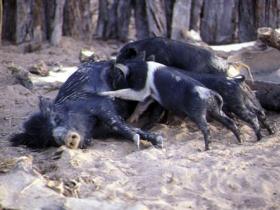Smallholder pig systems need better feed and management

Researchers from the National Agriculture and Forestry Research Institute in Lao People’s Democratic Republic studied the feeding and performance of pigs in smallholder production systems in Northern Lao PDR.
A survey was carried out in the North of Lao PDR to study feeding systems and the performance of pigs in smallholder systems. A total of 341 farmers from five provinces were interviewed. To feed their pigs, farmers mainly rely on feedstuffs produced on the farm and collected from areas near the village.
The feedstuffs used included by-products such as rice bran and distiller’s waste, planted feeds, mainly maize and cassava, and various green plant materials. The feedstuffs used are usually high in energy and low in protein content, and the only readily available protein source is green plant material. This results in nutritionally imbalanced diets and as a result poor pig performance. The average growth rate of pigs in these systems was found to be only approximately 100 g/day.
The reproductive performance of sows was found to be relatively low, as is the case of local breeds in the region, with an average litter size at birth of 6.8 piglets. The mortality of piglets was as high as 50% and was a main concern of farmers. In order to improve the productivity of pigs in smallholder systems, there is a need to find alternative feed resources to improve the nutritional feed quality, and to develop management systems which are suited to the needs and practices of smallholders.
This study has been published in Tropical Animal Health Production (2010, June 2).











